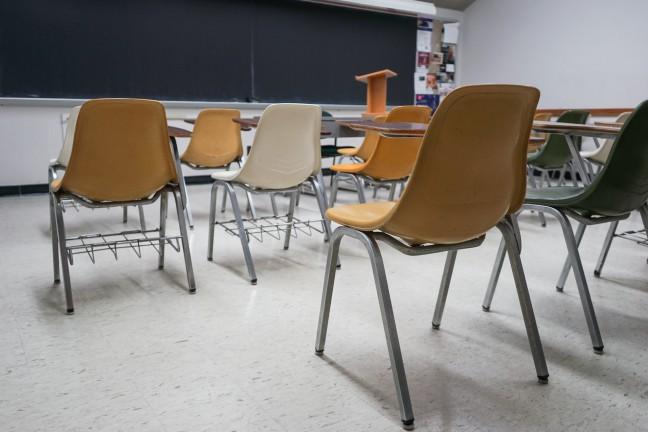When analyzing the average class size at the University of Wisconsin in comparison to the student to faculty ratio, it was perceived “smaller is better” by Karl Scholz, the Dean of College of Letters and Science at UW, but experts say it varies from student to student.
Scholz is not the only one to recognize smaller class sizes correlate to more stimulated students. Sources show lawmakers, educators and parents alike have started believing personalized education and hands on learning increases in a smaller classroom, and benefits students.
The implementation of technology in the classroom also renders positive learning feedback.
Board of Regents approves merging two-year colleges with four-year institutions
“Essentially, we need to push back on the idea that small means good and large means bad, or any other oversimplified characterization of what makes an outstanding classroom experience,” Scholz said.
Where interactive and hands on learning may work in some classroom settings, learning via traditional lecture and powerpoint is more beneficial to others, Scholz said.
David Kaplan, a professor in doctorate students in educational psychology agrees with Scholz. He said smaller class sizes can contribute to better learning among students.
This said, Kaplan believes smaller classes provide a “different experience” but this may not be good for every student.
“It completely depends on how the courses are structured, and the level of engagement of students,” Kaplan said. “I have taught small seminars that are deadly silent, and large classes that were quite active.”
Kaplan does not believe smaller classes are a direct link to better education. He does, however, hope to foster better education starting with UW students.
One UW faculty associate, Cindy Kuhrasch, said she recognizes the benefits of a small class size, but has seen just as high a level of participation and learning among students when different teaching styles are used in the classroom.
“I don’t know if it is necessarily class size that matters, as does the ability to use different teaching styles,” Kuhrasch said.
Kuhrasch has experience teaching in public schools and college courses with a varying number of students.
Attempting to implement hands on learning strategies or a new technology in a large lecture hall may not be as constructive for students as it would be if implemented in a smaller, more personalized classroom, Kuhrasch said.
“Actively engaged learning strategies are undoubtedly better,” Kuhrasch said. “But such teaching methods have to be conducive to the learning environment.”
Kuhrasch said although education increase may not be a direct correlation between class size, she believes the amount of participation and engagement in a classroom does affect a student’s education.
She said students from her smaller classes tend to be more confident in class, speak up regularly and visit office hours more often than students from her large classes.
“Of course getting to know students and speaking with them in a setting that isn’t a 100 person lecture is a great way to better tailor my teaching strategies to them,” Kuhrasch said. “It is strongly relational and pedagogical, what works for some students does not always work for others.”
Adhering to every student’s personal and unique academic needs is impossible on a college campus as large as UW’s, said Kuhrasch .
A consensus among professors is changes can be made to further the progress in creating a better learning environment for students.
“It is quite easy for students to go through their college career only knowing a handful of their classmate’s names,” Kuhrasch said. “They are in need of connection, whether they know it or not.”
Otherwise, she argues, students fall behind without connections in their classes and feel alone. Kuhrasch believes a social bond between students will help increase their education.
Kuhrasch suggests incorporating more ways for students to get to know each other throughout the semester and allowing students in all class sizes more opportunities to engage and play with class material.
“This will only enhance learning and create smarter, discerning, and passionate students,” Kuhrasch said.


















